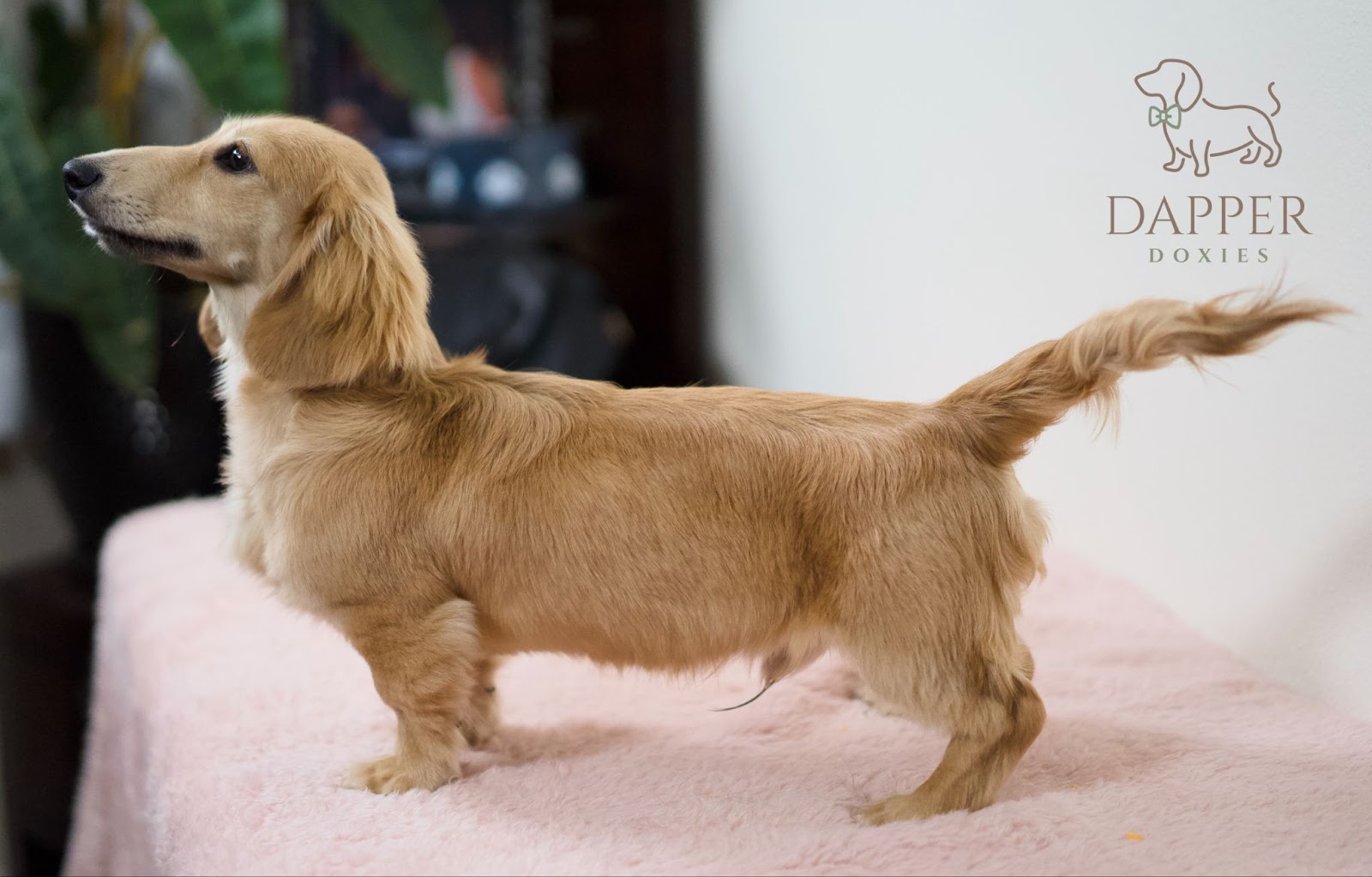How Do I Prevent Back Problems in My Dachshund?

From their quirky personalities to their unmistakably long little bodies, raising a Dachshund is nothing short of joyful chaos. These lovable pups are brave, loyal, stubborn, and full of spunk — the kind of dog who thinks they're ten feet tall even though their legs say otherwise.
At Dapper Doxies, we know just how special life with a Dachshund can be. But as with any breed, understanding their unique health needs is part of being the best dog parent you can be.
One of the most important things to keep an eye on with Dachshunds? Their backs.
Because of their long spine and short legs, Dachshunds are genetically predisposed to back problems, especially Intervertebral Disc Disease (IVDD). But here’s the good news: with the right knowledge, care, and lifestyle choices, you can help prevent these issues and give your Doxie the long, happy, and active life they deserve.
Let’s take a deep dive into how you can protect your pup’s back — starting today!
What is Intervertebral Disc Disease (IVDD)?
IVDD is a degenerative condition that affects the discs in a dog’s spine. These discs act as shock absorbers between the vertebrae, and when they begin to deteriorate or rupture, it puts painful pressure on the spinal cord.

For Dachshunds, this condition is unfortunately common. Signs of IVDD can range from subtle to serious, including:
-
Unwillingness to jump or climb stairs
-
Sudden yelping when touched
-
Wobbliness in the legs
-
Muscle spasms
-
Partial or full paralysis
If you notice any of these symptoms, it’s crucial to see a vet immediately. IVDD can progress quickly, and early intervention can make all the difference.
Are Dachshunds More Prone to Back Injuries Than Other Breeds?
In short, yes, they are.
Dachshunds’ unique “hot dog” build, technically called chondrodystrophic conformation, makes them especially vulnerable to spinal injuries. In fact, studies estimate that up to 1 in 4 Dachshunds will develop IVDD at some point in their lives.
Their long spine lacks the structural support other breeds have, and everyday activities like jumping off the couch or climbing stairs can put a strain on their vertebrae over time. But don’t let this scare you!
With the right precautions and lifestyle, many Doxies live their entire lives without ever experiencing a serious back issue.
Can Diet Help Prevent Back Issues in Dachshunds?
Absolutely! One of the most powerful tools you have to protect your Dachshund’s back is maintaining a healthy weight. Extra pounds mean extra pressure on your pup’s spine, increasing the risk of disc herniation and joint problems.

Here are a few diet tips to keep your Doxie’s back (and belly) in check:
Choose a high-quality, balanced dog food with joint-supporting nutrients like Omega-3s, glucosamine, and chondroitin. Watch those portions! Dachshunds love to eat, but even a few extra pounds can make a big difference. Avoid table scraps and high-fat treats. Consider supplements (with your vet’s approval) to support joint and bone health.
Remember, a lean, well-fed Dachshund is a happy, mobile one!
What Exercises Strengthen a Dachshund’s Back?
While you want to avoid activities that strain your Doxie’s back (like high-impact jumping or roughhousing with bigger dogs), gentle, consistent exercise is key to keeping their muscles strong and their weight under control.
Here are a few Doxie-friendly exercises to try:
-
Leash Walks: Short daily walks on flat surfaces are perfect for maintaining mobility without stressing the spine.
-
Core-Strengthening Play: Controlled tug-of-war, snuffle mats, or puzzle feeders can engage their core without overexertion.
-
Hydrotherapy: Swimming or underwater treadmill sessions (with supervision) are fantastic low-impact workouts, especially for older Doxies or those recovering from injury.
The goal is to build muscle tone without shock to the spine. A tired Dachshund is a healthy Dachshund — but they shouldn't be worn out from activities that put their back at risk.
Are There Special Beds for Dachshunds to Prevent Back Problems?
Yes, and they're a game-changer. Dachshund-safe beds are designed to provide firm, even support to the spine, helping reduce pressure on the back during rest. Here’s what to look for:
-
Orthopedic Foam: This helps keep their spine aligned and supports aging joints.
-
Low Entry Points: So your Doxie doesn’t have to jump or climb to get in.
-
Raised Sides: For neck support and a sense of security.
-
Anti-Slip Bottoms: Especially important for hardwood floors.
In addition to a quality bed, consider investing in ramps or steps for the couch or bed, and keep your Doxie off high furniture to prevent injury from jumping.
Final Thoughts: Be Proactive, Not Reactive
Back problems in Dachshunds are serious, but they’re also manageable and, in many cases, preventable. The key is staying informed, proactive, and attuned to your pup’s daily behavior. If something seems off, trust your instincts and call your vet.

At Dapper Doxies, we care deeply about the health and happiness of every puppy we place. Our Dachshunds are genetically screened, health-tested, and raised with the kind of care that sets them up for strong, healthy lives.
And we’re always here to answer your questions — even long after adoption day!
Ready to Add a Healthy, Happy Doxie to Your Life?
Whether you’re looking to bring home a new Dachshund or want guidance on caring for the one you already have, Dapper Doxies is here to help. Our puppies are raised with love, backed by health testing, and sent home with the support and knowledge you need to raise a thriving Doxie.
Contact us today with your questions or to apply for one of our available puppies. Your journey to raising a happy, healthy Dachshund starts here!